Third Trimester Birth Prep Routine: A 10-Minute Daily Flow to Prepare for Labor
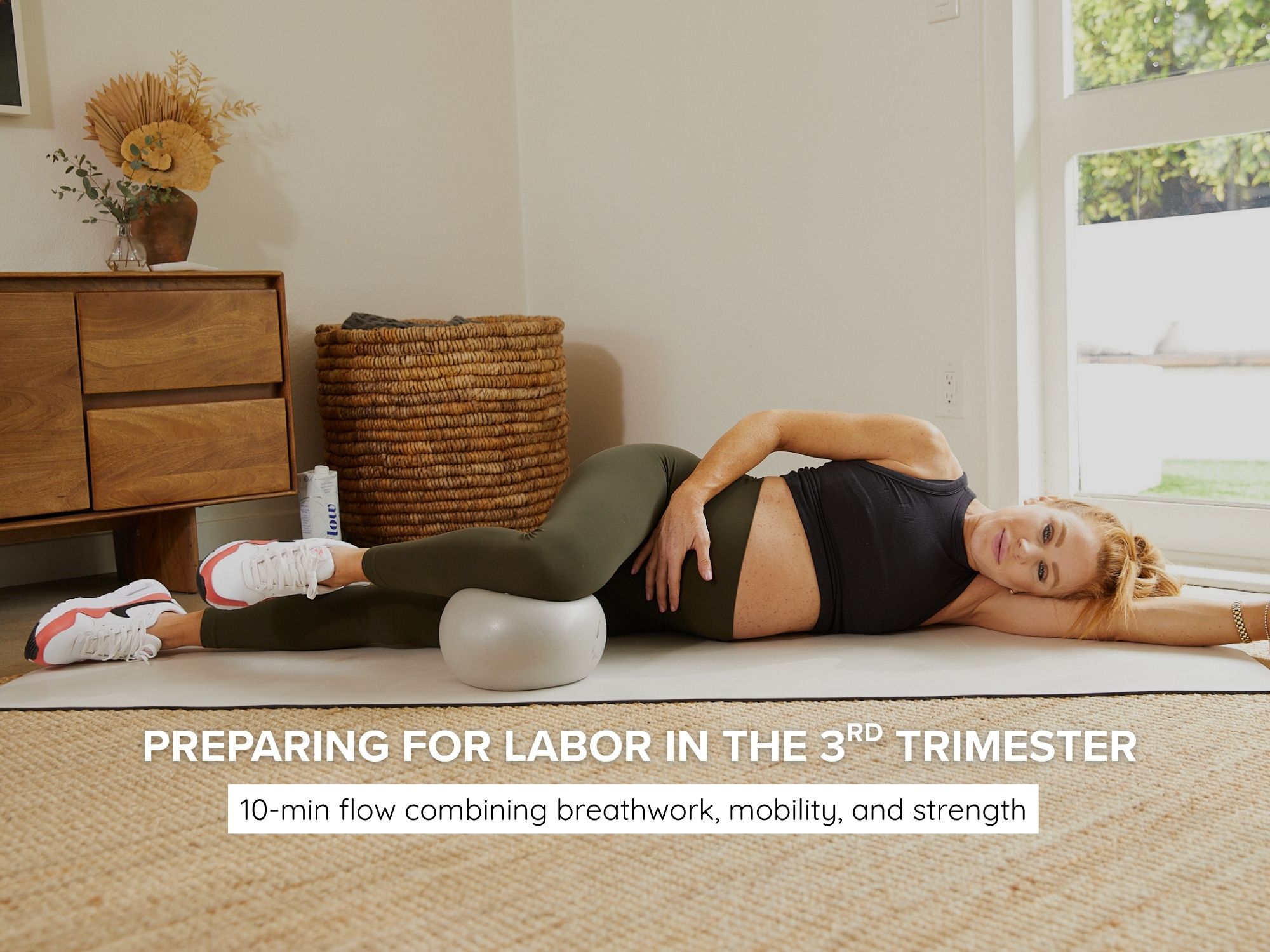
Looking for a quick and effective birth prep routine to prepare your body for labor? This 10-minute third trimester flow combines breathwork, mobility, and strength to support pelvic alignment, nervous system regulation, and labor progress.
Why a Daily Birth Prep Routine Matters in the Third Trimester
By the time you hit the third trimester, your body is already doing the work of preparing for birth. But intentional training can help you go into labor feeling more in control, more supported, and more confident.
A third trimester birth prep routine isn’t about fitness or aesthetics. It’s about preparing your body for the physical demands of labor by focusing on:
- Pelvic mobility for baby’s descent
- Breath control for pain management
- Pelvic floor awareness for effective pushing
- Nervous system regulation for better labor outcomes
- Core and glute strength for functional movement and birth positions
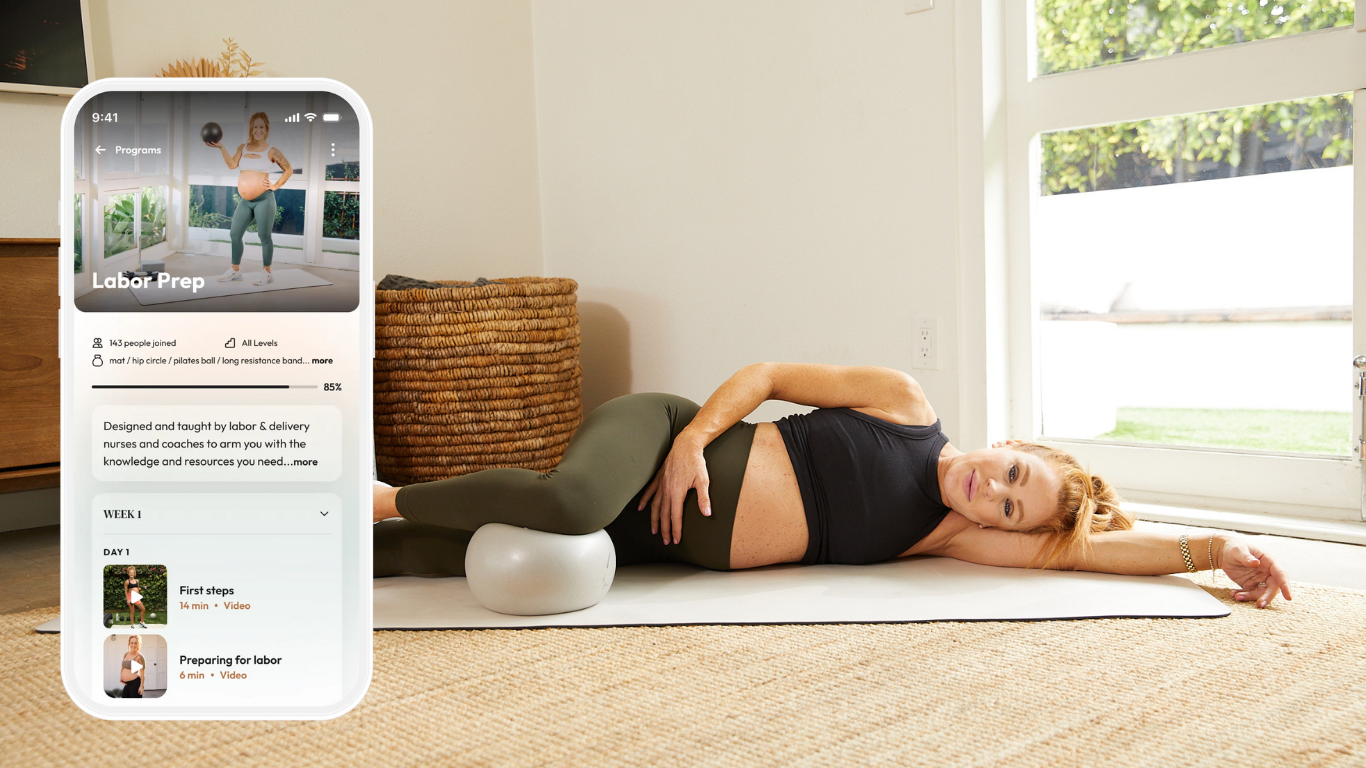
The Benefits of a Third Trimester Birth Prep Routine
Done consistently, this type of movement routine can help:
- Relieve pelvic tension and back discomfort
- Improve baby’s positioning for labor
- Increase confidence and body awareness
- Support more effective, pelvic floor–friendly pushing
- Enhance parasympathetic nervous system activity (rest, digest, and labor!)
Your 10-Minute Birth Prep Routine for Labor
This flow is designed for the third trimester and can be done daily or 4–5x/week. You’ll focus on mobility, breath work, and gentle strength, the exact combination your body needs right now.
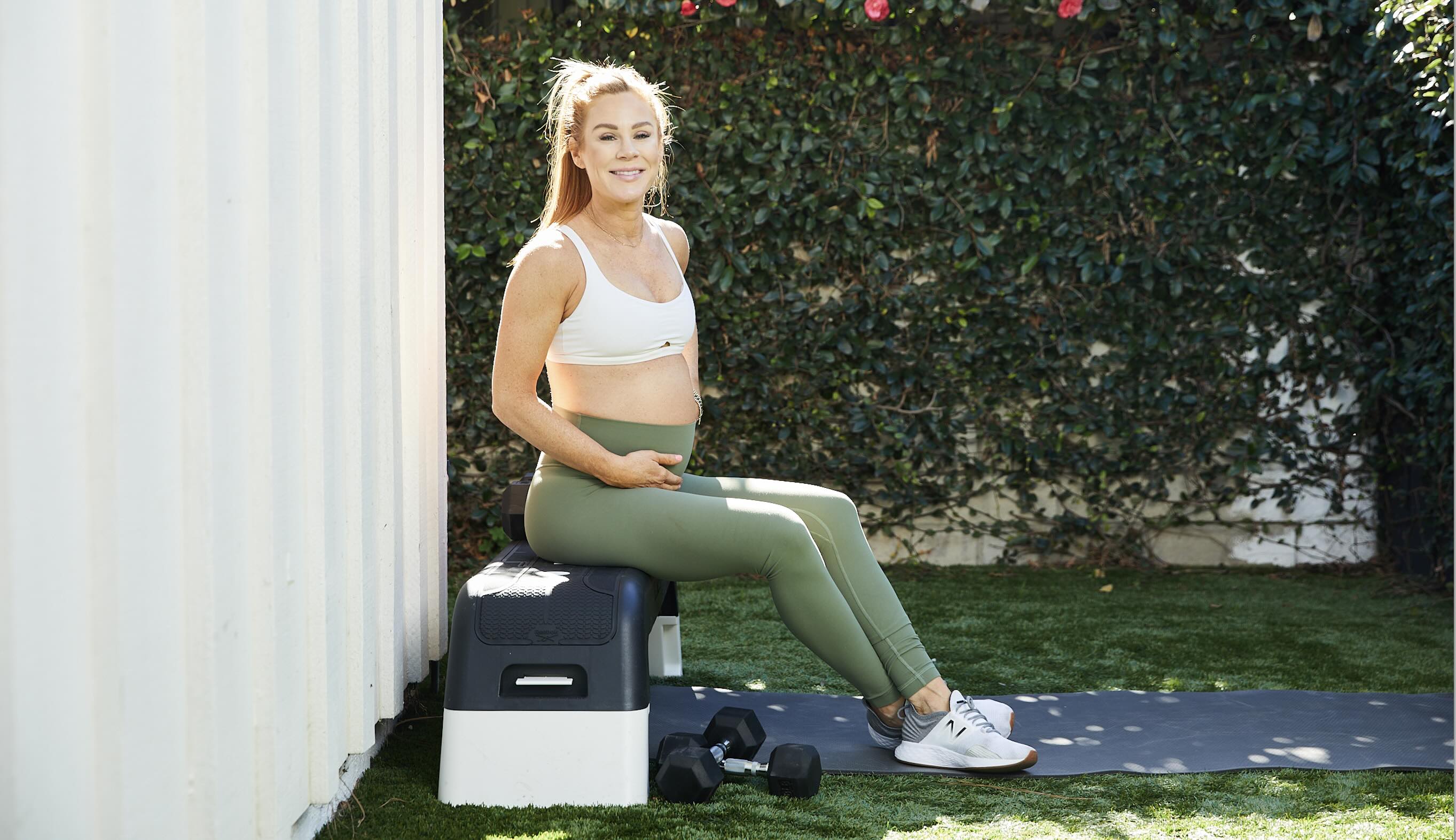
1. 360° Diaphragmatic Breathing (2 minutes)
Start in hands and knees or seated upright.
- Inhale through your nose, letting ribs expand in all directions
- Exhale slowly through soft lips, relaxing the pelvic floor
- Keep jaw soft, shoulders relaxed
- Do 6–8 slow, controlled breaths
Why it works: Helps regulate your nervous system and teaches pelvic floor to release (essential during labor).

2. Knees-Wide Rockbacks (1–2 minutes)
Start in child’s pose with knees wide and feet together.
- Inhale as you rock your hips back
- Exhale as you shift forward
- Keep spine neutral, breath slow
- Do 8–10 reps
Why it works: Improves pelvic inlet mobility and sacral movement—critical for baby’s descent.
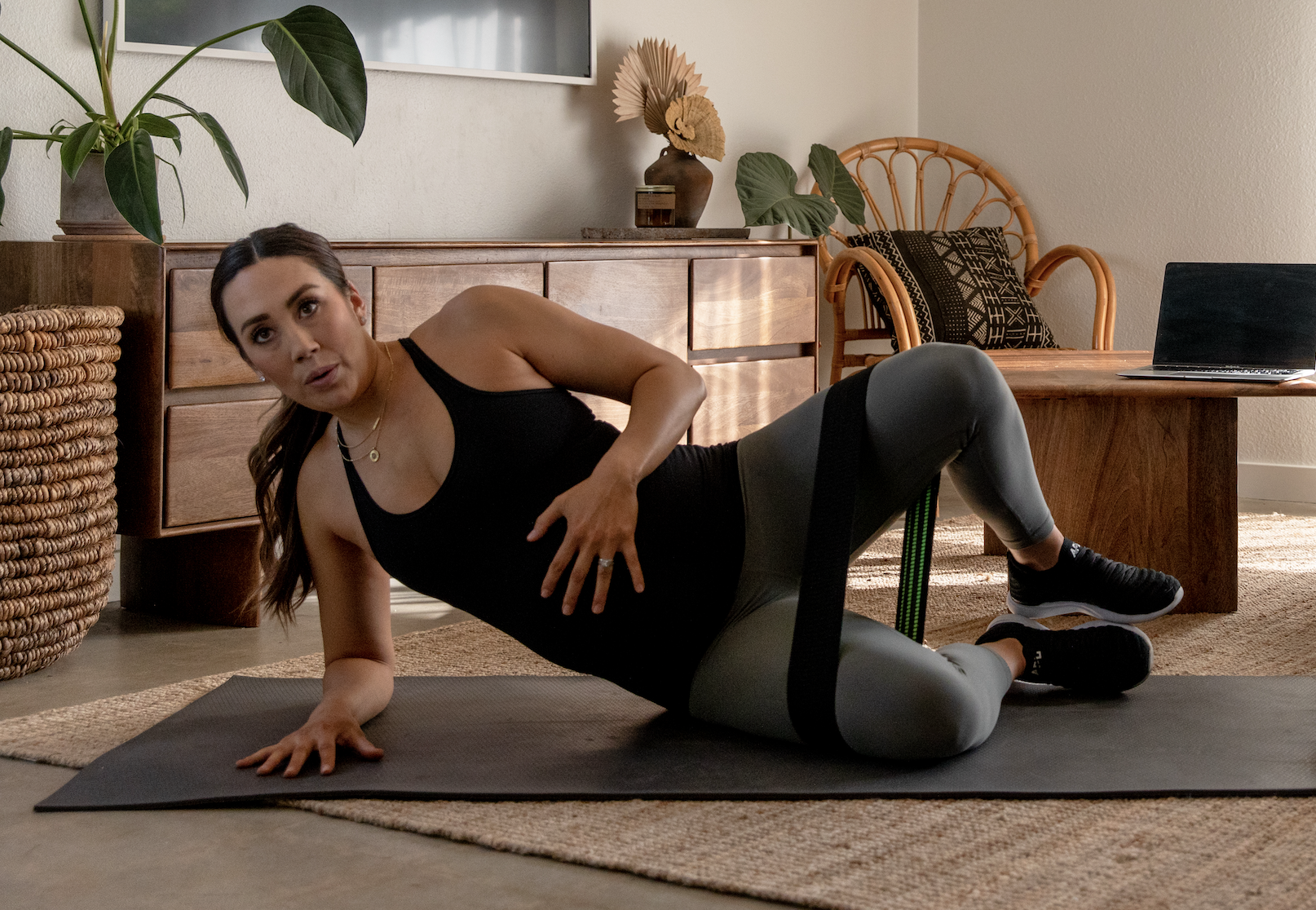
3. Side-Lying Hip Openers (1–2 minutes per side)
Lie on one side with knees bent
- Perform clam shells or small leg circles (band optional)
- Focus on slow, controlled movement
- 12 reps per leg
Why it works: Builds pelvic balance and glute activation, especially for mid-pelvis movement during labor.
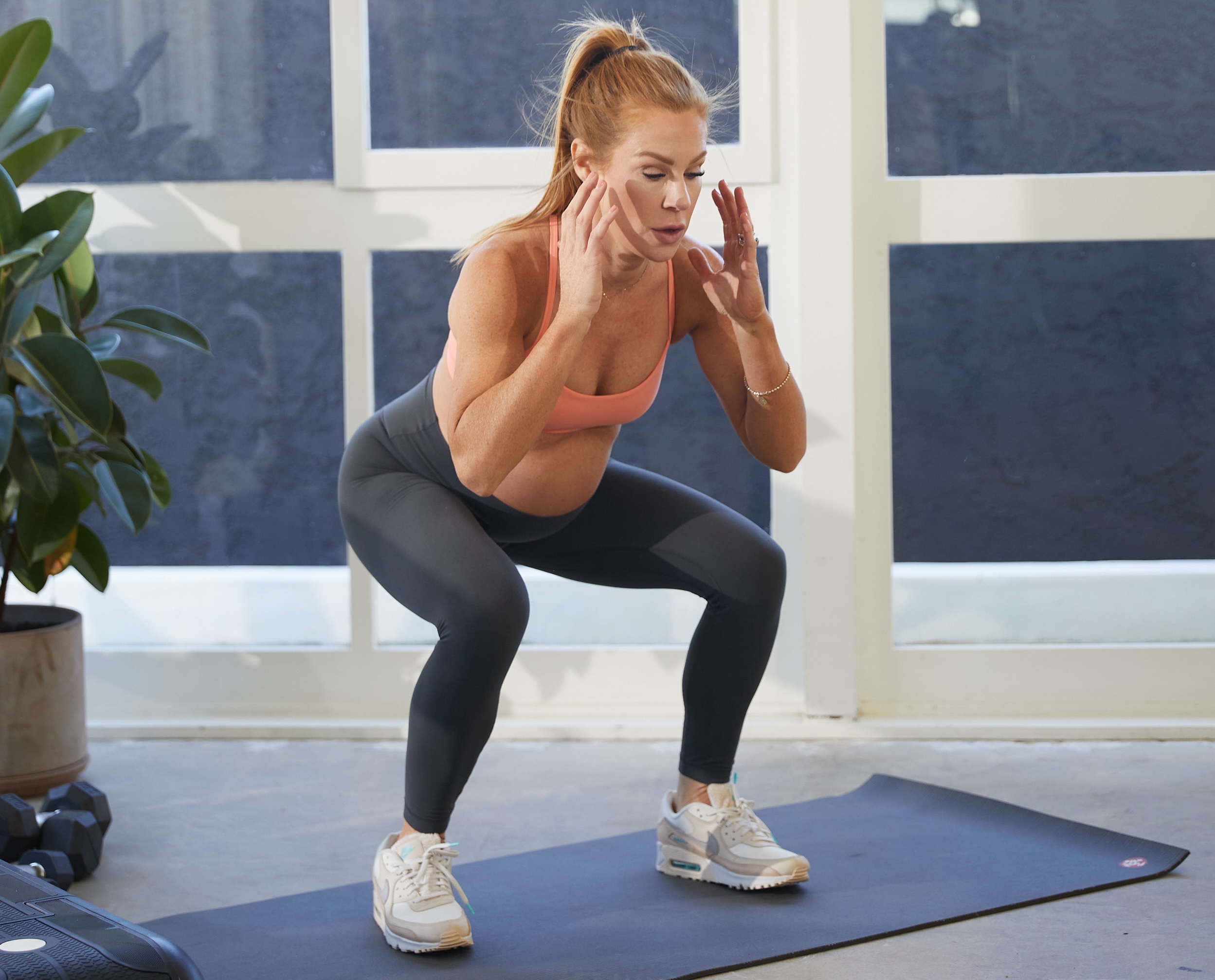
4. Deep Squat Hold with Breath (2 minutes)
Use a wall or support if needed.
- Feet wide, knees out, heels grounded
- Sink into a comfortable deep squat
- Breathe low into your belly and pelvic floor
- Try soft hums or low sounds on the exhale
- Hold for up to 2 minutes
Why it works: Mimics pelvic outlet positioning, relaxes pelvic floor, and teaches deep yielding.
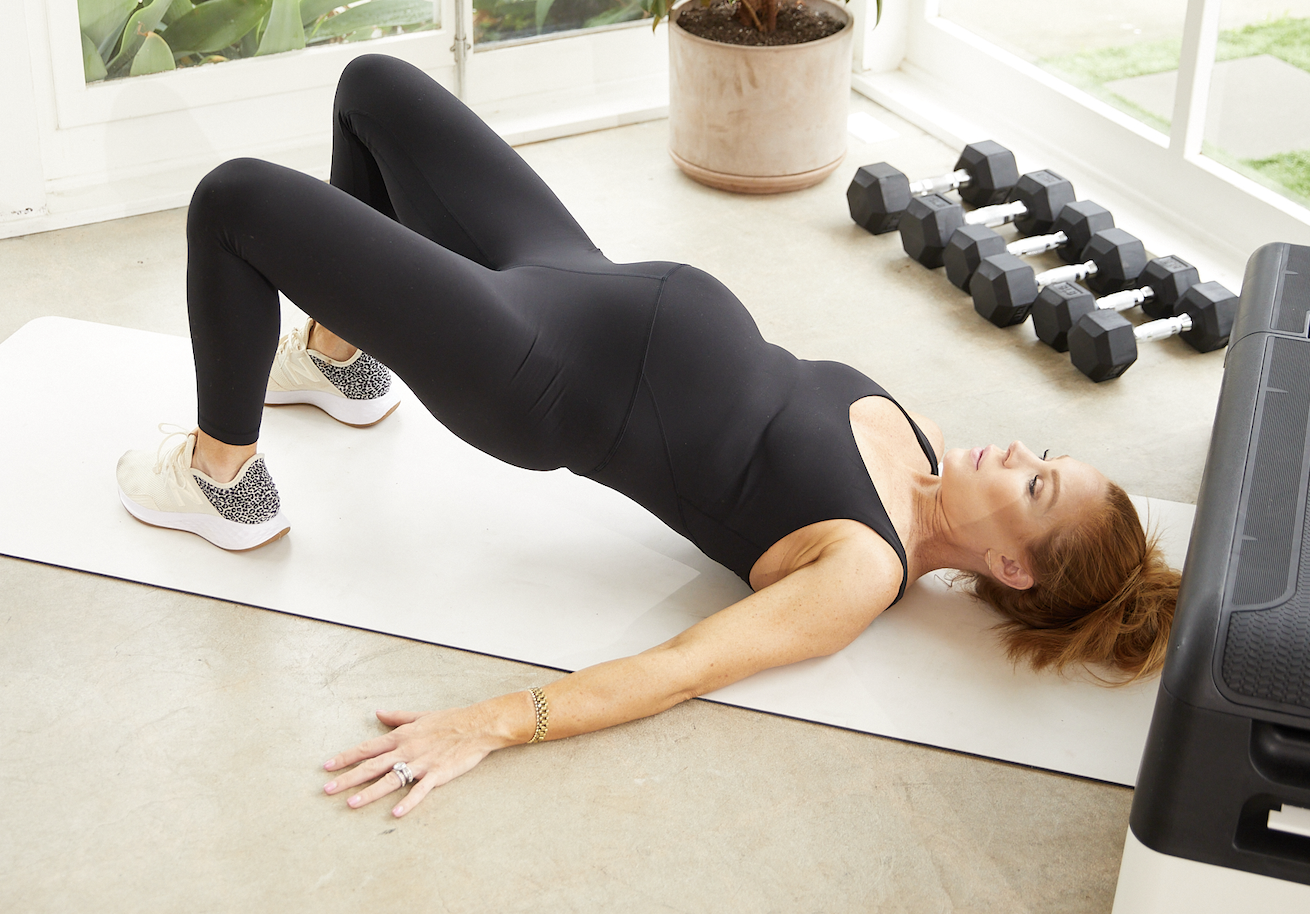
5. Glute Bridge with Exhale Lift (1 minute)
Lie on your back with knees bent, feet flat.
- Inhale to prepare
- Exhale and lift hips slowly, activating glutes
- Lower with control
- Do 6–10 reps
Why it works: Trains core-to-glute connection and supports stable pelvic alignment during labor.
What This Routine Prepares You For
Each movement in this birth prep routine is carefully chosen to support your body through all three phases of labor:
✅ Pelvic Inlet Preparation (Early Labor)
- Hip extension, breath control, and psoas release
- Focus on calm, rhythmic movement
✅ Mid-Pelvis Mobility (Active Labor)
- Lateral glute activation and asymmetrical movement
- Single-leg strength and hip shift drills
✅ Pelvic Outlet Opening (Pushing Phase)
- Deep squat variations, breath release techniques
- Internal rotation and sacral mobility
The Role of Breath work in Birth Prep
Your breath does more than bring in oxygen—it sets the tone for your nervous system, impacts your pelvic floor, and helps you work with contractions instead of fighting them.
This routine helps train:
- Ribcage mobility and expansion
- Diaphragmatic awareness
- Low, primal breath sounds to relax the pelvic floor
- Breath-to-effort timing for pushing
Bonus tip: If you have only 3–5 minutes, start with the breath work portion. It’s the most important skill to carry into labor.
Why Strength + Mobility Matter for Labor
This isn’t traditional prenatal fitness. This is intentional movement that prepares your body for birth. That means:
- Strength in the right places: glutes, core, upper back
- Mobility in the right joints: hips, pelvis, ribcage
- Awareness of the right systems: breath, pelvic floor, nervous system
How to Get the Most Out of This Routine
- Do it 3–5x a week in your third trimester
- Pair it with your Natal strength or mobility sessions
- Use it before bed to wind down
- Repeat it in early labor to stay relaxed and mobile
- Add in low vocalization (hum, moan, lip trills) to deepen pelvic floor release
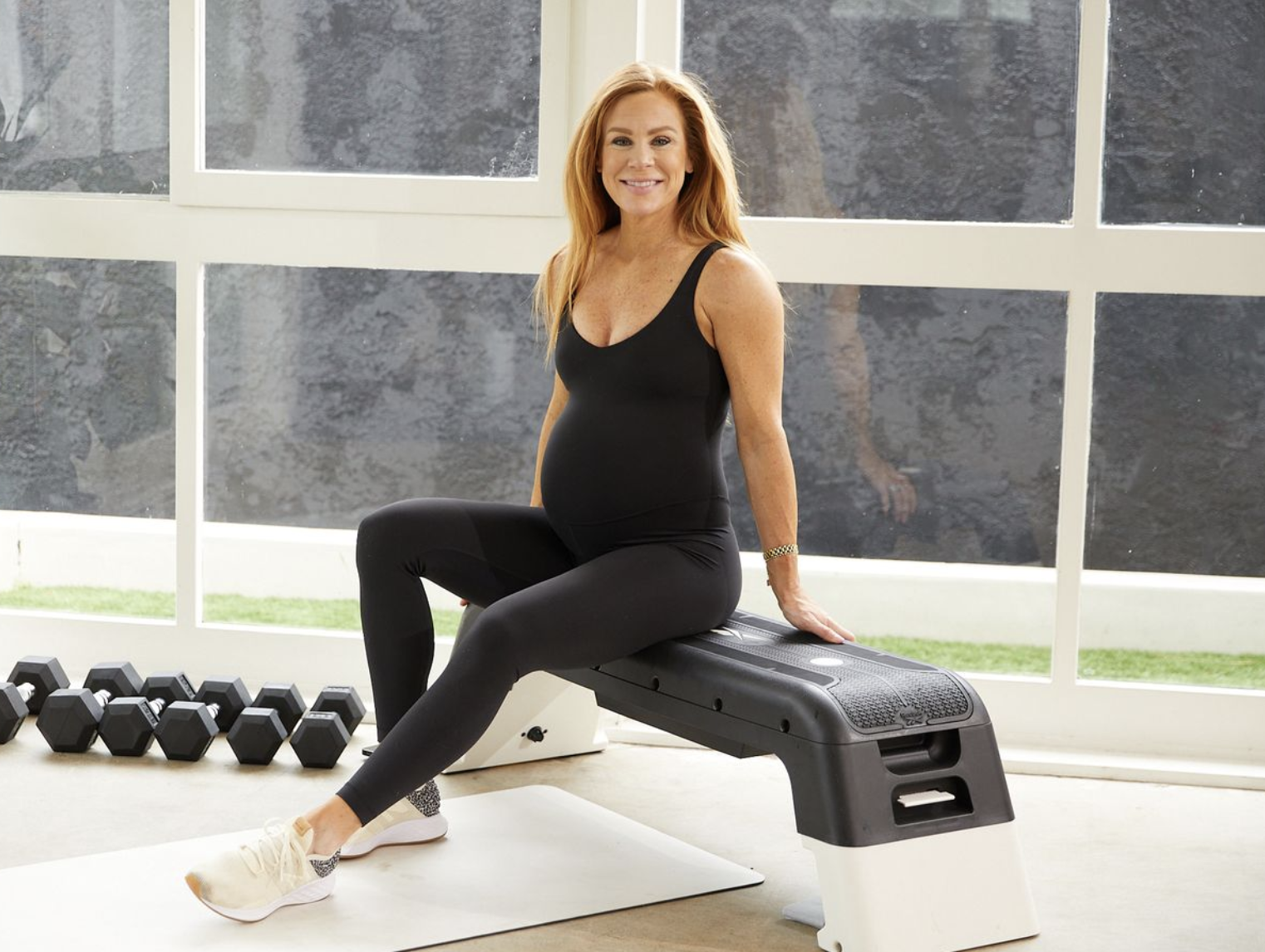
What If I Want More Than 10 Minutes?
Inside the Natal app, our Labor Prep Program gives you full access to:
- Follow-along strength + mobility workouts
- Breathwork sessions for labor and pelvic floor release
- Labor stage–specific movement prep
- Education on pushing positions and pelvic floor protection
- Guided recovery and positioning techniques for before, during, and after birth
All routines are built by experts to support your body as it changes—and to prepare you for what’s ahead with clarity and confidence.
Final Thoughts
You don’t have to spend hours prepping for labor.
You just have to spend the right minutes on the right things.
This 10-minute birth prep routine is your time to connect, release, and prepare. You’re not just getting your body ready—you’re building the trust, awareness, and calm that labor requires.
You’ve got this. And if you want even more support along the way, Natal is here for every breath, every rep, and every push.
Ready to take your labor prep to the next level?
Explore our Labor Prep & Pelvic Floor Programs inside the Natal app—built for real moms, real movement, and real results.

Natal app - birth and labor prep exercises




